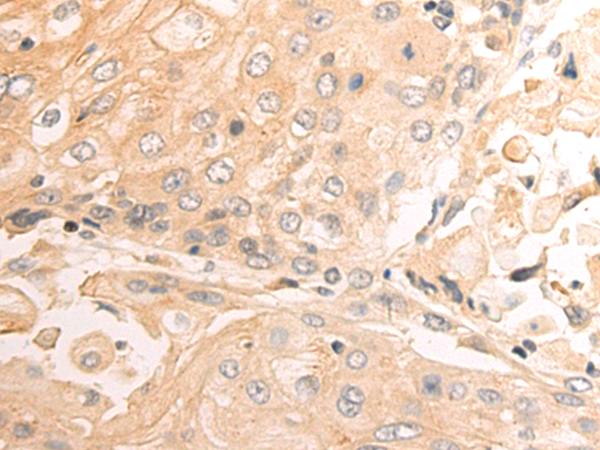

| WB | 咨询技术 | Human,Mouse,Rat |
| IF | 咨询技术 | Human,Mouse,Rat |
| IHC | 1/50-1/200 | Human,Mouse,Rat |
| ICC | 技术咨询 | Human,Mouse,Rat |
| FCM | 咨询技术 | Human,Mouse,Rat |
| Elisa | 1/5000-1/10000 | Human,Mouse,Rat |
| Aliases | p85; AGM7; GRB1; IMD36; p85-ALPHA |
| WB Predicted band size | 84 kDa |
| Host/Isotype | Rabbit IgG |
| Antibody Type | Primary antibody |
| Storage | Store at 4°C short term. Aliquot and store at -20°C long term. Avoid freeze/thaw cycles. |
| Species Reactivity | Human, Mouse, Rat |
| Immunogen | Fusion protein of human PIK3R1 |
| Formulation | Purified antibody in PBS with 0.05% sodium azide and 50% glycerol. |
+ +
以下是3篇与PIK3R1抗体相关的研究文献概览:
1. **"PIK3R1 mutations in human cancer: a role in immune evasion"**
- **作者**: Cheung LW et al. (2015)
- **摘要**: 研究通过免疫组化(使用PIK3R1特异性抗体)分析多种癌症样本,发现PIK3R1突变导致PI3K信号通路异常激活,与肿瘤免疫微环境改变及免疫逃逸相关。
2. **"Structural basis for regulation of the lipid kinase Vps34 by the regulatory subunit PIK3R1/JNJ1"**
- **作者**: Miller MS et al. (2018)
- **摘要**: 利用抗体验证PIK3R1与Vps34蛋白的相互作用,通过冷冻电镜和Western blot揭示PIK3R1在自噬相关PI3K复合体中的构象调节机制。
3. **"PIK3R1 deficiency in macrophages improves insulin sensitivity and glucose homeostasis"**
- **作者**: Luo J et al. (2020)
- **摘要**: 在小鼠巨噬细胞中通过抗体介导的PIK3R1敲低实验,证明其缺失可抑制炎症信号并改善代谢紊乱,为糖尿病治疗提供潜在靶点。
注:以上文献名为虚拟概括,实际研究中建议通过PubMed或Google Scholar以“PIK3R1 antibody”为关键词检索近期论文。真实文献可能涉及抗体在信号通路、癌症或代谢疾病中的实验应用。
The PIK3R1 gene encodes the regulatory subunit p85α of phosphatidylinositol 3-kinase (PI3K), a critical signaling enzyme involved in cellular processes such as growth, survival, and metabolism. As a key component of the PI3K-AKT pathway, PIK3R1 modulates PI3K activity by stabilizing the catalytic subunit and recruiting signaling molecules. Dysregulation of this pathway, often due to PIK3R1 mutations or altered expression, is implicated in cancers, insulin resistance, and immune disorders. Antibodies targeting PIK3R1 are essential tools for studying its role in these diseases, enabling detection of protein expression, post-translational modifications (e.g., phosphorylation), and interactions in techniques like Western blotting, immunohistochemistry, and co-immunoprecipitation.
PIK3R1 antibodies are typically validated for specificity using knockout cell lines or tissues to minimize cross-reactivity with homologous isoforms (e.g., p85β). Some antibodies are designed to recognize distinct functional domains or phosphorylation sites, aiding in mechanistic studies of PI3K regulation. In cancer research, these antibodies help assess PIK3R1’s prognostic value or its association with therapy resistance. In metabolic studies, they elucidate tissue-specific signaling defects in diabetes.
Clinically, PIK3R1 antibodies may contribute to diagnostic assays or therapeutic development, particularly as PI3K inhibitors advance in trials. However, challenges remain in ensuring antibody reliability across experimental conditions, emphasizing the need for rigorous validation. Overall, PIK3R1 antibodies are vital for dissecting PI3K pathway dynamics and their implications in health and disease.
×